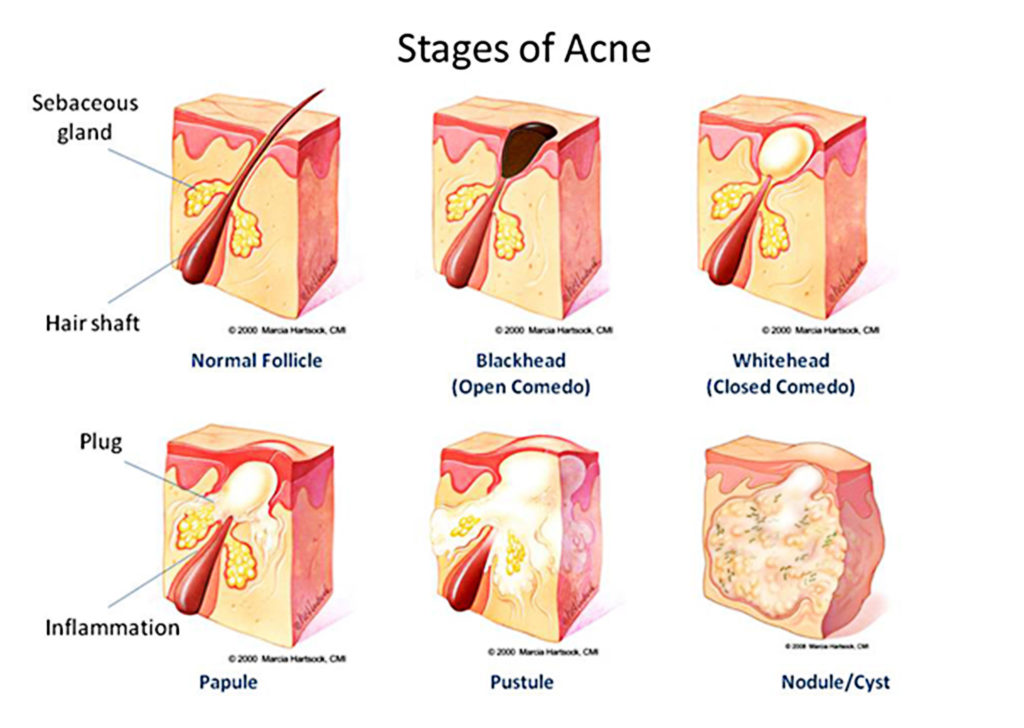The skin is the largest organ of the human body, covering up to 20 square meters in surface area. It serves many functions besides its protective roles against heat, light, infections and injuries. It is critical for the regulation of body temperature as well as the production of Vitamin D. The skin is the most obvious part of the human anatomy; an ambassador of some sorts of the person beneath its cover. Sometimes, first impressions are made based on skin colors, its tones and silent hues. Many have had life transforming experiences just because of the color of their skins. Opinions are formed, deals are struck and liaisons are made, sometimes based on the silent messages being transmitted by the human skin. In women especially, the skin plays a crucial role in shaping body image and perceptions of beauty. It is the canvas on which every other adornment rest. It is therefore crucial to discuss common skin problems in women and how best to prevent and treat them. And of the common skin problems seen in women, such as acne vulgaris, psoriasis, stretch marks, age spots and rashes, none causes as much emotional distress, and consumes as much resources as the common acne.
ACNE VULGARIS
Acne Vulgaris (commonly referred to as pimples and zits) is perhaps the most common skin condition in both women and men. It is often associated with adolescence, being triggered in part by the hormonal changes of puberty seen in both male and female. Beyond the teen years however, experts have estimated that up to 50% of women will experience acne breakouts later on in life. Acne in adults, as in teenagers, is caused primarily by the accumulation of excess sebum, bacteria proliferation and inflammation. Sebum is an oily substance produced by skin glands in the skin. Excess sebum blocks skin pores –through which the skin breathes, and excretes its waste. Bacteria growth in the blocked pores then leads to inflammation, and ultimately, pimple breakouts. In most women, breakouts occur due to an imbalance in the production and secretion of sex hormones by the body (estrogen and androgens) during pregnancy, and around the menopausal period. Stress has also been identified as a major cause of acne breakouts as well as smoking in women. Inheritance also plays a role in predicting risks of acne breakouts, as individuals with a family history of acne are more likely to also experience breakouts as adults.
PREVENTION OF ACNE
To prevent acne, a woman must do everything possible to keep her skin clean. This may involve washing the face at least twice daily with warm water (not hot), and if possible, with a mild face cleanser in order to prevent the accumulation of oil on the face. The use of cleansers may cause skin dryness, so it is further advisable to use the right kind of skin moisturizer and hair gels. Look especially for those with ‘‘non comedogenic’’ printed on their containers and more importantly, try to use as little as sparingly as possible. Likewise, it is important to use ‘non comedogenic’ make-up, and wash all facial make-up off before going to bed at night. That way, the facial skin can ‘breathe’ better, and heal.
TREATMENT OF ADULT ACNE
The treatment of acne breakouts in adults is much more difficult than that seen in adolescents. If there are suspicions to suggest that the acne is linked to stressful events, adopting stress management techniques will definitely help to reduce the extent and duration of breakouts. But even that may not be enough to eliminate an ongoing breakout. Before presenting to a doctor, experts advice the use of over the counter cleansers, creams and lotions containing retinol, salicylic and glycolic acids which have all been shown to help open skin pores, reduce inflammation and cover acne lines.
Benzoyl benzoate can be used to treat isolated spots (do not use this as a mask, as it may cause excessive skin drying. If these do not work, a doctor’s prescription may be needed for more potent treatments such as antibiotics like Doxycycline, or low dose estrogen and spironolactone to attenuate the hormonal imbalances that are often at the root of many acne breakouts.
More advanced treatment options such as the use of laser, pulsed light and photodynamic therapy with aminolevulinic acid exist for more severe cases of acne. Whatever you do, however, try not to pop those juicy looking pimple spots. That may sound counter-intuitive, but pressing open acne spots only lead to the development of scars.
